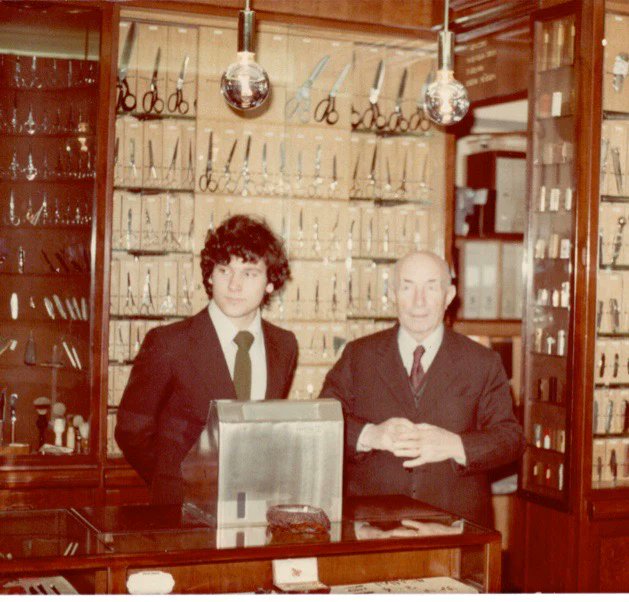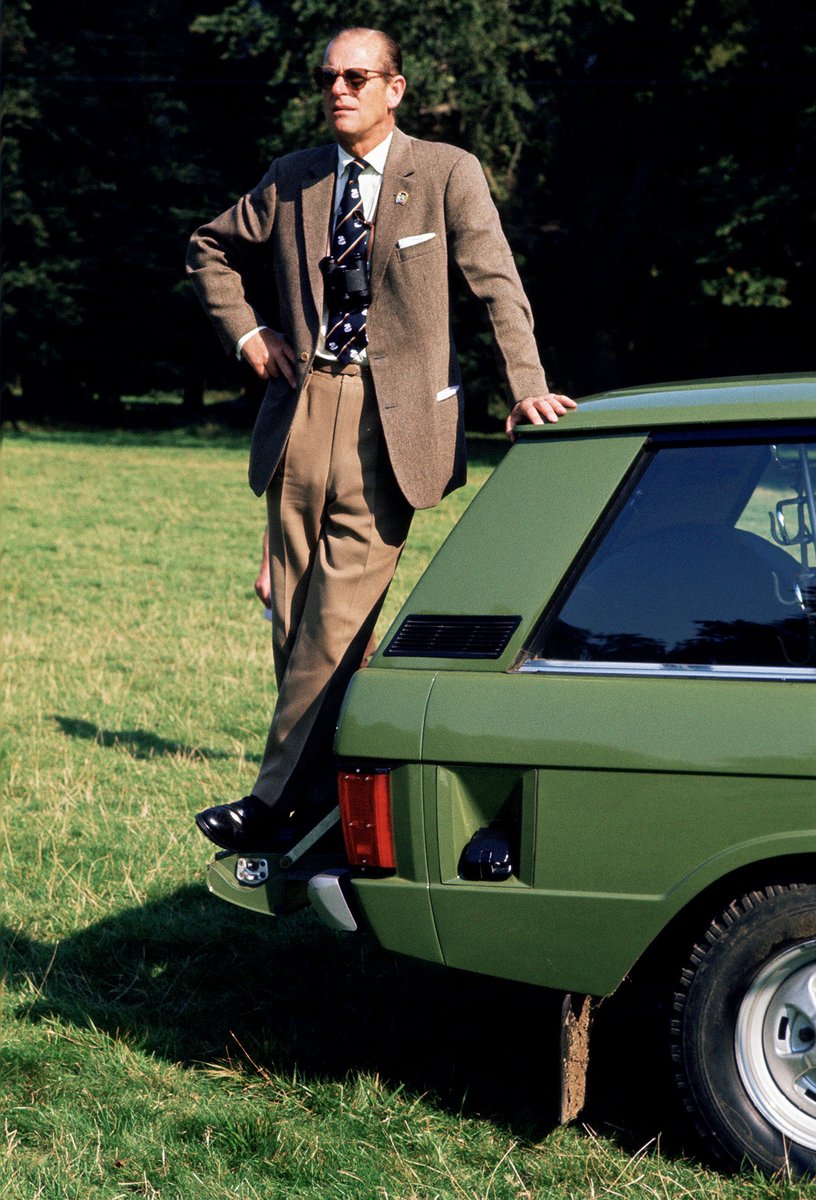I disagree and will explain why you are wrong. 🧵
https://twitter.com/Will_Tanner_1/status/1848428842811088978
As men's tailoring has slowly died, many people, including Will, see things in overly broad strokes. He thinks that these outfits are the same when they couldn't be more different. He also alludes to this idea of "noblesse oblige," which refers to a specific social class. 



To understand the difference, we have to go back to the founding of Brooks Brothers in 1818. Brooks was the most important American men's clothier, as they invented the ready-made suit and introduced American men to things such as sack suits, Shetland tweeds, polo coats, etc. 

At the turn of the 20th century, Brooks Brothers clothed that class of upwardly mobile Americans who saw their fortunes rise with industrial capitalism. Their children went to elite private schools such as Phillips Academy, which fed into the Ivy League system. 

These students shopped at satellite campus clothiers such as The Andover Shop and J. Press, which carried similar Brooksy styles (soft shouldered suits, rep ties, Shetland knits, etc). There were some crazy styles at this time, but the look was "very demure, very mindful." 



When these students graduated, they worked on Wall Street, at major law firms, and in the halls of political power. The term "white shoe firm" refers to those prestigious professional service firms once staffed by Ivy League graduates who wore white bucks (a marker of class) 



This look, known as Ivy style, was the aesthetic of the American ruling class (aka patrician style, WASP style, Old Money look). Notice the soft shoulder here, the dartless front (which result in straighter sides). If you were able to see the back, you'd see a hook vent. 



Along with the softer more "demure" look, there was also an emphasis on thrift (born of Protestant values). In 1952, a photographer snapped a photo of Adlai E. Stevenson—who actually comes from that "noblesse oblige" class—while he was on the campaign trail.
Despite having generational wealth, there was a hole in Stevenson's shoe. For those in the know, these markers—beat up shoes, frayed oxford button-down collars, patched up tweeds—are a mark of real "patrician style." 



There's a joke about how if you ask one of these people where they bought their clothes, they will say they inherited it from their grandfather. This shows generational wealth—you didn't buy the clothes, you inherited them, which isn't something that can be bought.
You also see this quality in King Charles' clothes: patched up suits and shoes, cracked leather, 30-50 year old clothes, and repaired Barbour jackets.
Real wealth—generational wealth—shows patina.



Real wealth—generational wealth—shows patina.




Donald Trump is none of these things. He lives in a gold home (the opposite of demure). His suits are from the flashy Italian brand Brioni. They have much more structured square shoulders. He wears bright red satin ties. 

Satin is a very bright, glossy material. A real American patrician would never wear such a thing, but if forced, they would do so at night (never in the afternoon, as the material would be too shiny and thus gaudy). The patrician choice would be a simple, matte silk rep tie. 



Trump dresses as a flashy businessman and entertainer. His suits are heavily padded to create an imposing, authoritative figure. His bright red tie is a matter of branding. 

Entertainers were once so looked down upon that Frederick Scholte, the Dutch-English tailor who dressed the Duke of Windsor, wouldn't take them on as clients (save for two, so long as they didn't wear his suits on screen). He turned down a client bc they arrived in a flashy car. 



Today, the language of tailoring is mostly dead and people, such as Will (the original poster), only see things in broad strokes. So a suit is just a suit; casualwear is just casualwear. Suit people are noble; casualwear people are slobs. Etc etc etc.
They think "Old Money style"—patrician style, "noblesse oblige" style, WASP style—is the set of photos on the left when it's really the right. The flashiness of the left is, in fact, distasteful and goes against those old Protestant values. 







Will, the original poster, even has the term "WASP" in his bio, despite seemingly knowing nothing about the style. Real "WASP" style—as in Ivy Style—is nothing like Trump. It looks more like this: 







To bring this to King Charles and his social class, the British equivalent looks like this below. Charles himself is a well-known and longtime client of Anderson & Sheppard, a Savile Row firm famous for their soft shoulders (opposite of Trump's padded Brioni suits) 







There are only a few American political figures left who dress in this manner. One is Robert Mueller, who came from that kind of New England family. You know it from his choice of suits, ties, and collars. A journalist who spent time with him told me Mueller shops at Brooks Bros 







The suggestion that Trump's style can be in any way described as "noblesse oblige" only shows how little most Twitter trads know about the style they supposedly revere. 



A central difference between me and the many people who will reply angrily to this thread is that I don't think suits are automatically "good" and casualwear is automatically "bad." A good casualwear outfit is better than a bad suit (and this happens often). I don't hold disdain for everyday people, so I don't use suits as a political cudgel.
Jeff Bezos and Donald Trump—two figures featured in that original thread—both dress badly to me. It matters none that one is a suit.
I mainly take umbrage with the idea that Trump's style can be in any way described as "aristocratic" or "noblesse oblige." These words refer to specific classes of people who had specific dress habits. Trump's attire has nothing to do with that practice.
You can say he never dresses down, which is true, but you can then just make that point without acting as though there's anything aristocratic about his dress. He's simply a businessman entertainer. Suit salesmen also never dress down, and if their dress habits were similar to Trump's, their style would also have no relationship to "aristocratic style."
"Twitter trads" often want to be patted on the back for simply liking suits (I doubt many of them wear them with much regularity), despite not appreciating the fine details or nuances of various styles. Yet, they also complain about the slipping of standards in schools—people are graded on a slipping curve, they say.
But is this not also just a slipping of standards? You want to label anything with revers and three pockets as "aristocratic?" Put on any old suit and suddenly you're King Charles. Give me a break.
Just make your point: Trump doesn't dress down (this is true). And you hate the modern world. You fancy yourself as being above other people, despite the fact that, the very signaling of this thing, shows you are irreparablely middle-class.
To state the obvious, you can like suits, tailoring, and Old Money style without LARPing in this way (I know many menswear enthusiasts who love Old Money style and are very forthright about their class status and hold no grudge against everyday citizens). If you must LARP, at least know what you're talking about.
Jeff Bezos and Donald Trump—two figures featured in that original thread—both dress badly to me. It matters none that one is a suit.
I mainly take umbrage with the idea that Trump's style can be in any way described as "aristocratic" or "noblesse oblige." These words refer to specific classes of people who had specific dress habits. Trump's attire has nothing to do with that practice.
You can say he never dresses down, which is true, but you can then just make that point without acting as though there's anything aristocratic about his dress. He's simply a businessman entertainer. Suit salesmen also never dress down, and if their dress habits were similar to Trump's, their style would also have no relationship to "aristocratic style."
"Twitter trads" often want to be patted on the back for simply liking suits (I doubt many of them wear them with much regularity), despite not appreciating the fine details or nuances of various styles. Yet, they also complain about the slipping of standards in schools—people are graded on a slipping curve, they say.
But is this not also just a slipping of standards? You want to label anything with revers and three pockets as "aristocratic?" Put on any old suit and suddenly you're King Charles. Give me a break.
Just make your point: Trump doesn't dress down (this is true). And you hate the modern world. You fancy yourself as being above other people, despite the fact that, the very signaling of this thing, shows you are irreparablely middle-class.
To state the obvious, you can like suits, tailoring, and Old Money style without LARPing in this way (I know many menswear enthusiasts who love Old Money style and are very forthright about their class status and hold no grudge against everyday citizens). If you must LARP, at least know what you're talking about.
• • •
Missing some Tweet in this thread? You can try to
force a refresh































